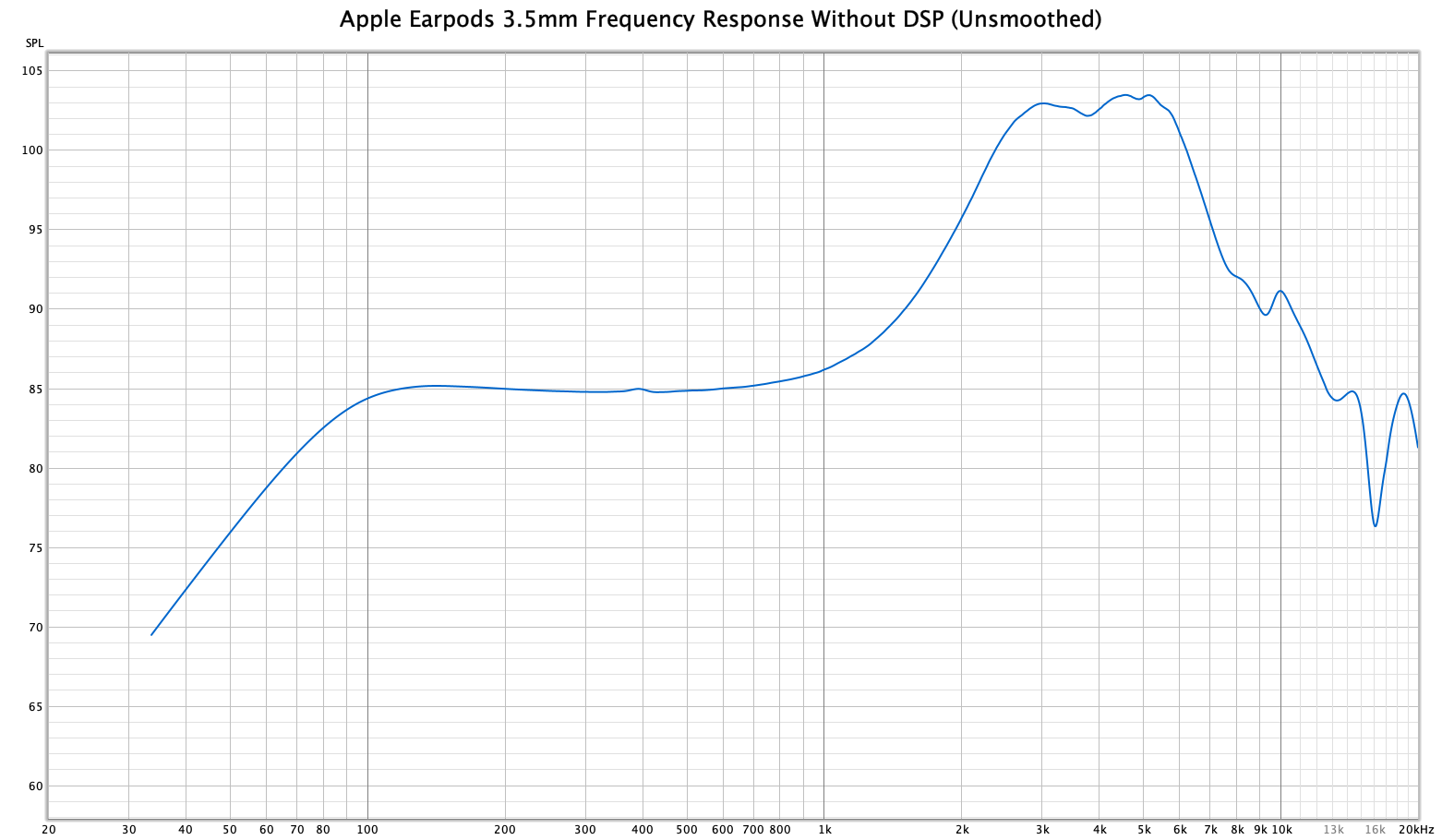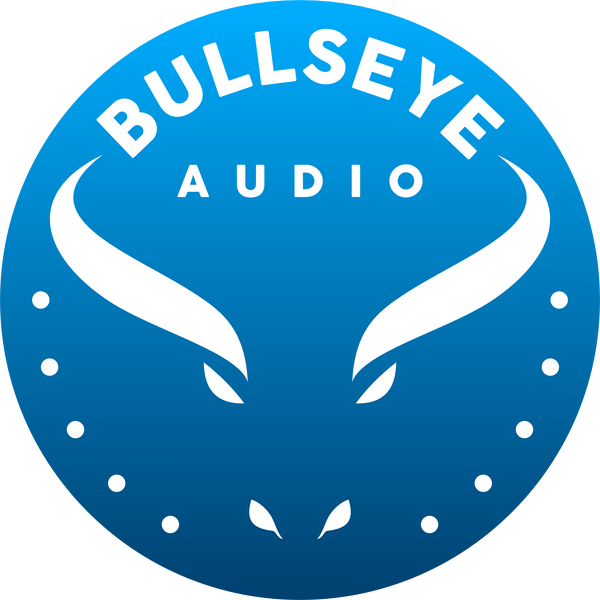In this article, we will explore the untapped potential of Apple EarPods and discuss why we chose them as the only featured headphone in Neptune.
To preface, the goal of Neptune is to provide listeners with the most accurate listening experience possible and our reasoning for selecting Apple EarPods was based solely on their ability to help us achieve that goal.
The question now is, what makes Apple EarPods such a strong candidate?
Apple EarPods have two key strengths that make them the best starting point for our processing.
The strengths are an extremely smooth and consistent frequency response and world class distortion performance.
These characteristics cannot be altered with any amount of processing, so it is imperative that our headphone model have these right out of the box.
All other factors relating to sound quality can be corrected for using DSP, meaning we need a headphone that has these characteristics in its default state.
In the remainder of this article we are going to give you a detailed explanation of the claims above.
Four variables determine the quality of a sound system.
As described in another article, perceivable quality of a sound system comes down to these four key variables.
- Frequency Response (Flat at all Frequencies 20Hz - 20kHz)
- Crossfeed (Realistic Simulation of Speaker Imaging and Soundstage in the Free Field)
- Distortion (Lowest Possible Levels at all Frequencies 20Hz - 20kHz)
- Phase and Time Response (Flat at all Frequencies 20Hz - 20kHz)
There are two important factors to consider before correcting headphones.
From the list above, there are two things that we cannot fix using DSP. The first pertains to the frequency response (specifically its smoothness and consistency) and the second has to do with the headphone’s distortion characteristics. Let’s explore further what these problems are and how they ultimately define our criteria for choosing a headphone to correct.
The frequency response of a headphone can be measured by a measurement microphone. The resulting graph will tell us how loud the headphone plays at different frequencies. This is helpful to know because with this information we can apply an inverse equalization filter to flatten the response. In practice however, results tend to be very different than we would expect. This is due to the headphone’s frequency response smoothness and frequency response consistency.
Why Frequency Response Can’t Always Be Corrected
Frequency response smoothness is simply defined as the difference in amplitude between neighboring frequencies. A simple eyeball test is sufficient in determining a given response's smoothness. The graphs below give visual examples of both types of responses.


Having a smooth frequency response is an advantage because it puts less stress on the equalization filter (no ringing artifacts). When a smooth frequency response is paired with high frequency response consistency, the correction applied can become incredibly precise.
Frequency response consistency is the difference in the measured frequency response over multiple reseated measurements. The results of reseated measurements on a given response can be dramatically different. That being said, this effect is far more pronounced with over-ear and on-ear headphones than it is with in-ear headphones.

The explanation for this is that there is much more room for error when trying to place your over/on-ear headphones in the same spot as opposed to in-ear headphones.
Putting on over/on-ear headphones is similar to a putting on a hat. Each time you put on a hat, you place it in a slightly different position on your head. The hat will function the same regardless of its relatively altered positioning, but a headphones response can be highly dependent on its placement.
On the other hand, in-ear headphones can be compared to contact lenses in that there is much less room for error when placing them in your ears and eyes respectively. In this case, both the contacts and in-ear headphones will be placed in nearly the same position and function the same with each successive placement.
The combination of these two factors can make or break a headphone. In the case of a headphone with both poor frequency response smoothness and consistency, it will be impossible to correct with any accuracy or precision.
The reason for this is that the averaged response of all the measurements will not be a good reflection of the response you hear on any given headphone placement and therefore the filters will be largely ineffective. Overcompensating with filters that are too precise will lead to excessive boosting (leading to possible hearing damage) or attenuation.
The frequency response for Apple EarPods is far less volatile than most other headphone models across the entire audible range and especially in the high frequencies. As for what this means for the listener; reliable, consistent and neutral sound. The two graphs below compare our measurements of the Audeze LCD-X ($1699) to Apple EarPods after applying digital signal processing.


As you can see there is relatively little deviation from flat in the corrected responses for Apple EarPods when compared to the LCDX. Because of this, the listener can be confident that what they hear is reflected in the measurements.
Apple EarPods outperform nearly the entire headphone market in distortion performance.
The main advantage here is straightforward, a headphone with low distortion provides an uncolored presentation of the source audio.
According to rtings.com, Apple EarPods ($14) scores an 8.8/10 in weighted harmonic distortion. For reference, the popular Sennheiser HD 660S($399) scores 8.3/10, and the Sennheiser HD 800S ($1400), a headphone that is widely considered as being the best in the world, scores an 8.5/10. Clearly, Apple EarPods give exceptional performance in this department.
Another point worth mentioning is that, before processing, Apple EarPods lack in their bass response (<100Hz). In order to compensate for this, our filters need to do some heavy lifting to boost the low frequency response to appropriate levels. Fortunately, Apple EarPods have exceptionally low distortion levels even at sub frequencies. This allows us to boost aggressively without any audible distortion artifacts.
Circling back to our main point, using Apple EarPods for our processing is not a compromise, but a selection based on its measurable advantages. In this case, their distortion performance is world class.
Conclusion
Apple EarPods give us the perfect starting point to use digital signal processing to create the ultimate critical listening experience. We are able to fully correct for the only weaknesses of the headphones and when combined with their inherent strength we are left with an unrivaled listening experience.
Neptune guarantees that the listener gets a flat frequency response paired with very little harmonic distortion and a crossfeed simulation that realistically simulates stereo speakers. The fact that you can get them for as little as $14 on Amazon is just a bonus.
The resulting sound is both clear and accurate, allowing you, the listener and creator, to trust your ears as you make creative or technical decisions. It is one thing to read about it, but another to hear it for yourself. Download and install Neptune for a two week free trial.
